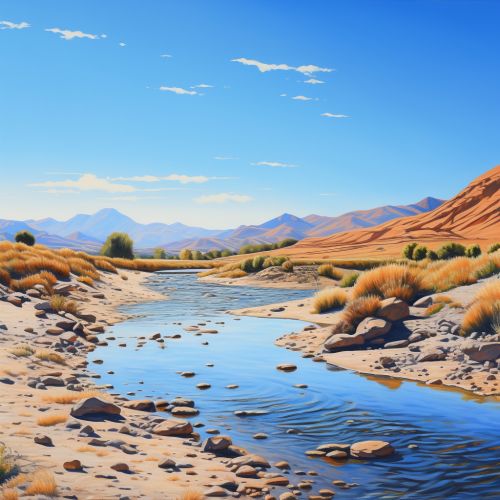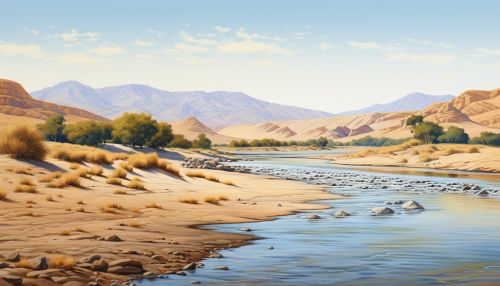Euphrates River
Geography
The Euphrates River, one of the most important rivers in the world, originates in the eastern highlands of Turkey. It then flows through Syria and Iraq, and finally empties into the Persian Gulf. The river is approximately 2,800 kilometers long, making it the longest river in Western Asia.


Hydrology
The Euphrates River is fed by numerous tributaries, the most significant of which are the Murat River and the Kara Su. The river's flow is highly seasonal, with the highest water levels occurring in the spring due to the melting of snow in the Turkish highlands. The river's flow is regulated by a series of large dams, including the Atatürk Dam in Turkey and the Tabqa Dam in Syria.
Ecology
The Euphrates River supports a diverse range of ecosystems, from the mountainous regions of Turkey to the arid deserts of Iraq. The river's floodplain is home to a variety of plant and animal species, including the Euphrates softshell turtle and the Euphrates jerboa. However, the river's ecology has been significantly impacted by human activities, particularly dam construction and water extraction for irrigation.
History
The Euphrates River has played a crucial role in the history of the Middle East. It was along the banks of the Euphrates that some of the earliest civilizations in the world, including the Sumerians, Akkadians, and Babylonians, developed. The river was a vital source of water and transportation for these civilizations, and it continues to play a significant role in the region today.
Economic Importance
The Euphrates River is a vital source of water for agriculture in the arid regions of Syria and Iraq. The river's water is also used for hydroelectric power production, particularly at the Atatürk and Tabqa dams. In addition, the river is an important transportation route, with numerous ports along its length.
Current Issues
The Euphrates River is currently facing a number of serious challenges, including water pollution, over-extraction of water for irrigation, and the impact of dam construction on the river's flow and ecology. These issues have led to significant tensions between the countries that share the river, particularly Turkey, Syria, and Iraq.
